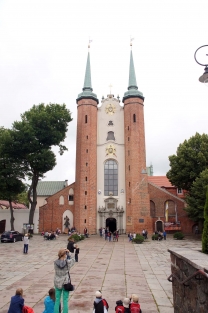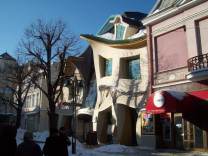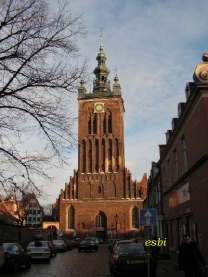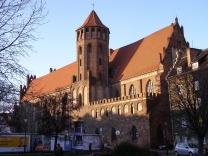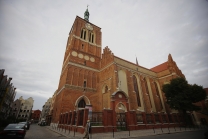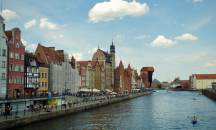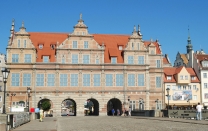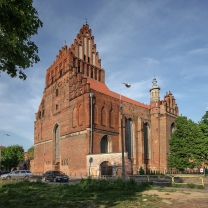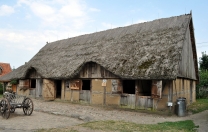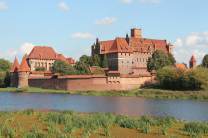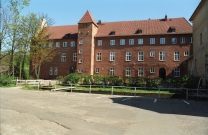Abbot's Palace in Oliwa
No video yet
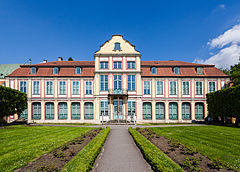
Abbot's Palace (Oliwa)
The Abbots' Palace in Oliwa (Polish: Pałac Opatów w Oliwie) is a rococo palace in Oliwa, a quarter of Gdańsk (Danzig). The first portion of the palace, the "Old Palace" was constructed in the 15th century. Later, in the first half of the sixteen hundreds a "New Palace" was added, which served as the residency of the then abbot of the Cistercians, Jan Grabiński. The final additions to the palace were made between 1754 and 1756, and were funded by another Cistercian abbot, Jacek Rybiński.
Night view of the palace.After the partitions of Poland the area became part of Prussia, in 1831 real estate of the Cistercians was secularized and the palace became property of the House of Hohenzollern. From 1796 until 1836 the Bishops of Ermland (Warmia), Karl von Hohenzollern-Hechingen and Joseph von Hohenzollern-Hechingen resided in the Palace. It remained empty until 1869 when Maria Anna von Hohenzollern-Hechingen, niece of Joseph, took up residence there. After her death in 1888 the ownership of the palace was taken over by the city of Oliva, which used it for offices and apartments.
During the interwar period of the Free City of Danzig the palace contained a museum which housed exhibitions on the history of the region. The director in charge of the museum was a Nazi activist named Erich Keyser.
In 1945, at the end of World War II...






